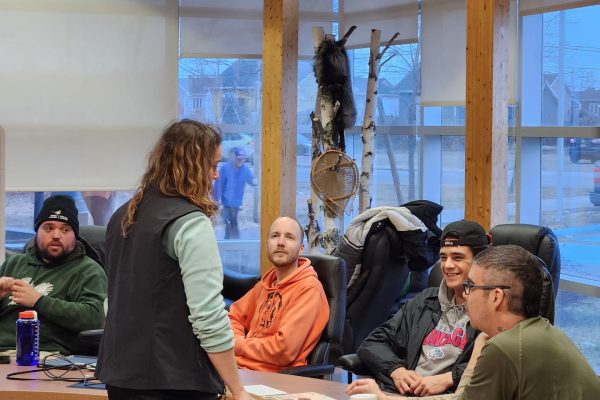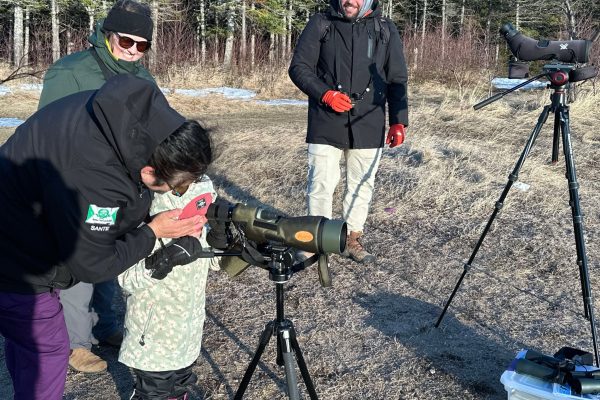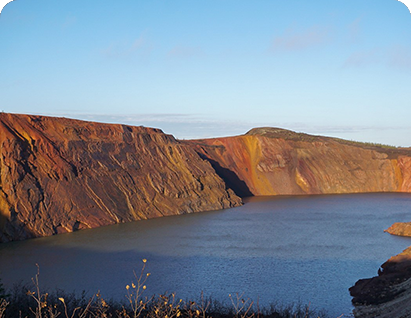Shoreline observations, identification of seabirds at Uashat mak Mani-Utenam
Observing and identifying the seabirds of Uashat mak Mani-Utenam
Last week, training on seabird identification was offered to the Nitassinan guardians of Uashat mak Mani-Utenam. It aimed to address a concern expressed by the community regarding the health status of the Canada goose (Nishk), as well as the recent presence of newly observed bird species in the territory.
This activity took place in collaboration with the Avian Wildlife Project Managers from FNQLSDI, Birds Canada and the guardians from The Rights and Territory Protection Office of Uashat mak Mani-Utenam. Together, they discussed future waterfowl monitoring projects, as well as possibilities for installing a Motus antenna in the community. This technology would make it possible to detect migratory birds equipped with transmitters during their passage through the territory. The Motus network represents a research and conservation tool, providing data on migration routes, stopovers and seasonal behaviors, useful both for the community and international scientific research.


Finally, two open meetings for everyone, of the 4@7 type, were organized at the Agora (La Pointe du Poste) in the community of Uashat mak Mani-Utenam to identify the birds observed at the site. Despite unfavorable weather conditions, these events led to wonderful discoveries. Thanks to the active participation of those present, several species were able to be identified, notably the Common Eider (Missip), the Barrow’s Goldeneye (Mishikushku) and the Double-crested Cormorant (Kakatshiship).
Picture on the left:
Common Eider, or Missip in Innu-aimun.






